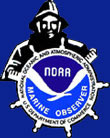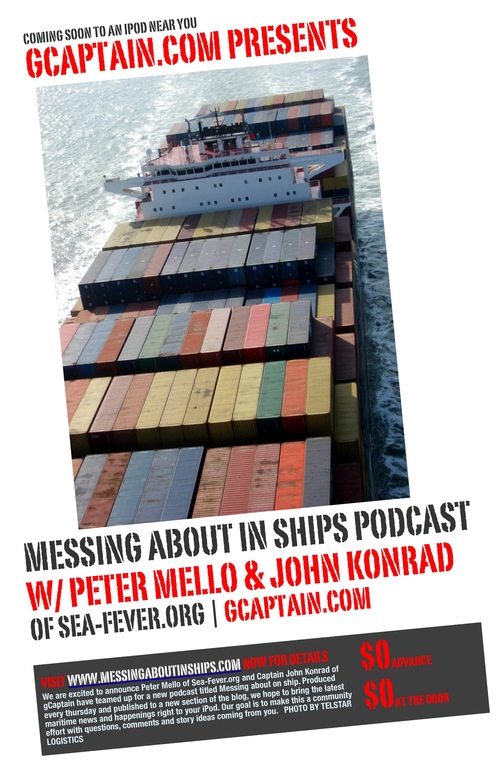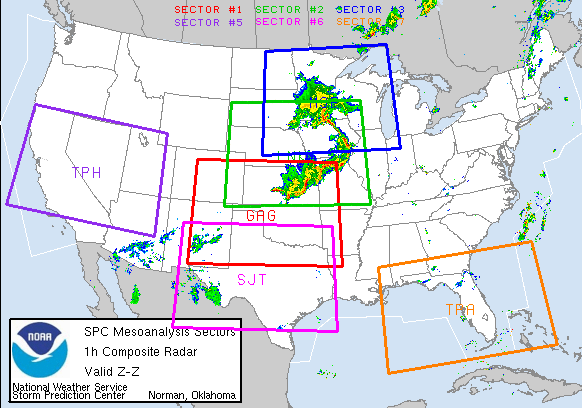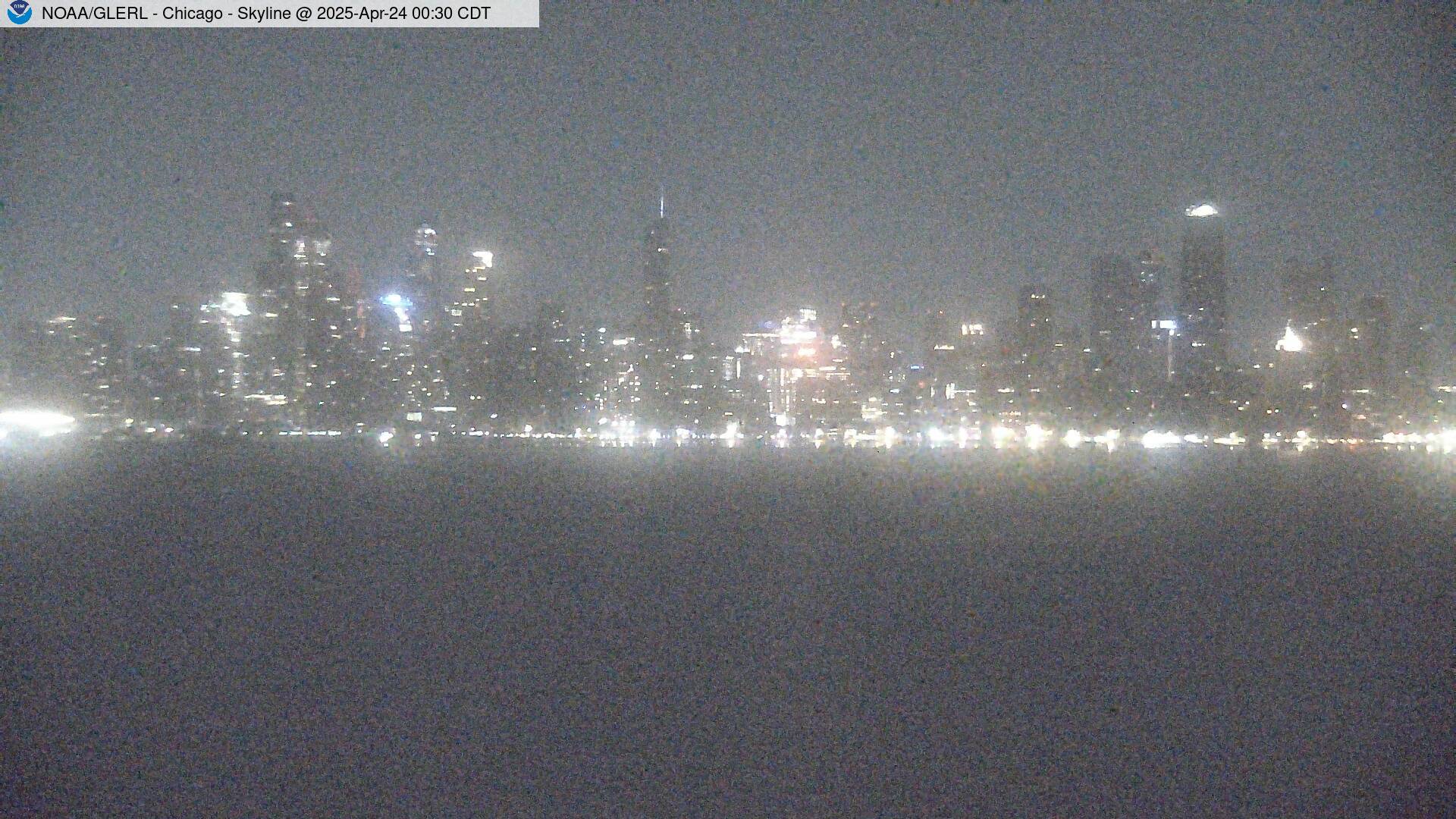 DEATH'S DOOR
DEATH'S DOOR(The full story, with related interviews and full-color photos are in the article in Soundings Magazine November 2008 issue..)
The Crew of a 44-foot cutter narrowly survive a knockdown, a 360-degree roll and, ultimately, the loss of their boat in a fierce Atlantic storm..
By Douglas A. Campbell Senior Writer
There was no conversation in the saloon of the 44-foot cutter Sean Seamour II, where the crew had retreated to ride out the huge storm waves one spring night in 2007. A drogue had been deployed on more than 500 feet of line, and a reefed storm jib was keeping the bow pointing downwind.
Outside, the storm howled, and mountains of water loomed 70 feet above the stern. Inside, only Rudy Snel’s voice occasionally broke through the roar, which had become background noise. Wind speeds were consistently reading above 70 knots. The 62-year-old Snel sat at the chart table and let his new friends know whenever there was a gust of more than 80 knots.
Ben Tye, 31, was sitting in the curved settee behind the oval table to port. Jean Pierre de Lutz, 56, the skipper, a citizen of the united States and France who owned the center cockpit Beneteau, was in one of the cushioned seats to starboard. As seas pounded the port bow with frightening frequency, Snel, a retired school teacher, remained at the nav station long enough to announce a high gust of 85.5 knots. Then he went back to the aft stateroom to nap. His rest would be short-lived; the following near-death experience would be anything but.
Sean Seamour II was caught in Tropical Storm Andrea may 6, 2007, off North Carolina. In the next 12 hours, two other yachts – one with a professional crew of three, the other sailed by a 75-year-old couple and their 45-year-old daughter – would be abandoned in the storm. And the 54-foot yacht Flying Colours would, after it’s EPIRB had transmitted two erratic signals, disappear without a track with it’s professional crew of four.
Although the search for Flying Colours was futile, Coast Guard helicopter crews saved nine sailors, including Snel, Tye and de Lutz, as they flew rescue sorties in this powerful storm, which at its peak generated 70-foot seas and produced winds as strong as 100 mph. Without exaggeration, the trio of sailors aboard Sean Seamour II are lucky to be alive today.
In hindsight, professional weather forecasters and yacht routers would agree there had been sufficient warning of the looming storm. Regardless, the severity of the conditions on board Sean Seamour II went far beyond what the three sailors had anticipated when they left Jacksonville, Fla., five days earlier for the start of a trans-Atlantic voyage.
The destination was France, with stops in the Azores and Gibraltar. Snel and Tye were volunteer crewmembers. They had never met de Lutz, a European management consultant and former hotelier in France, before he picked them up at the airport in Jacksonville when they arrived for the voyage. Each had signed aboard to acquire offshore sailing experience. Snel, from Ottawa had sailed a 27-footer on the Great lakes. Tye, a professional chef who had quit the hot kitchen to become a professional sailor, lives in the United Kingdom and had taught sailing around the world, though typically on lakes or coastal waters and within sight of land.
WELL PREPARED
Both were impressed with de Lutz when they saw his exhaustive preparations for heading offshore. Sean Seamour II, aboard which de Lutz had previously completed one of his two Atlantic crossings, had been stripped of its equipment following its last voyage. The gear was stored in an air-conditioned warehouse.
In preparation for the 2007 Atlantic crossing, de Lutz had the marina where he kept his 44-footer send out his life raft and GPIRB for recertification, which included checking the device’s battery. (A GPIRB is an electronic position-indicating radio beacon, or EPIRB, that incorporates a GPS and is able to send a precise location to rescuers.) De Lutz says the Georgia-based company reported that the emergency transmitter was in good condition and that its battery was good until the following November, but could last another five years.
Sean Seamour ii also had two drogues, once a Seabrake model de Lutz says he had used five or six times in a heavy mistral in the Mediterranean and three times in “critical conditions” at the tail end of Hurricane Bertha in 1996. He had bought a 500-meter reel of line, cut into four sections, for the drogue rode, as well as new chain segments and swivels. He says he trained Snel and Tye on the use of the drogue before departing.
Preparations for the voyage also included installation of a new wind sensor, autopilot hydraulic pump, stuffing box seal, house battery bank, fuel filter system, sail-handling sheets, rudder bearings, auxiliary tiller, and all life vests, flares and other safety equipment. In addition, de Lutz had examined the entire rig and the running lights, serviced the engine, polished the fuel, and sent the life raft and GPIRB for recertification.
For navigation and communications, Sean Seamour II had paper charts as well as two computers programmed with navigation and satellite telephone software, for sure in receiving weather information. The crew tried the electronics before they left, the skipper says.
De Lutz says he also briefed the crew on the boat’s equipment and tools, and discussed such safety contingencies as closing seacocks and companionway doors, executing proper lashings, and a discussion on how to use the electronics, drogues and more. Moreover, beginning a week before departure, the seven-day weather GPRIB files (computer generated weather forecasts) were downloaded and studied regularly. These shows two high- and two low-pressure systems “fairly balanced” over the western Atlantic, De Lutz says.
EPIRBs
Early on the morning of May 2, 2007, Sea Seamour II headed down Florida’s St. Johns River. In the afternoon, de Lutz stopped to top off his fuel tanks, and then the three men entered the Atlantic. Tye hoped for some adventure.
“Being outside one’s comfort zone is what it is all about for me,” says Tye. “Only then can you truly perform at your maximum level.” But no one on board expected the maelstrom they would encounter in just four days.
Sean Seamour II had two EPIRBs on board. The GPIRB, with its state-of-the-art technology, was mounted in a bracket in the cabin. The second EPIRB, an older 406 MHz model registered to de Lutz’s old boat, Lou Pantai, was mounted on the hard dodger. The emergency beacons certainly provided some sense of security for a boat headed offshore. Tye, for instance, says he wouldn’t have boarded de Lutz’s boat had there been no EPIRB.
But in the end, even they provided no guarantee of rescue. When the sailors were in desperate straits, confusion over the registration of the GPIRB actually caused rescue authorities to dismiss its emergency signal as a false alert (see accompanying story). What ultimately summoned rescue forces and saved the trio was the signal transmitted by the older backup device.
DeLutz steered for the Gulf Stream to take advantage of the current as long as the winds were favorable. On the first night out, Snel, taking the early watch, marveled at a large pod of dolphins.
There were squalls and some rough water in the Gulf Stream, and at one point, because the boat was taking on water from an unidentified leak, there was talk of heading for Norfolk, Va., to make repairs. But de Lutz determined that the leak was from the recently replaced rudder bearings. He packed in more grease and continued the northeasterly course.
When winds shifted to the northwest early May 5, de Lutz steered to the east on a route that would pass 300 miles north of Bermuda, on track for the Azores. At about 6;20 the following morning, the crew spotted an aircraft carrier heading to Newport News, Va. They were sailing in 30-knot winds, gusting to 35 knots.
HERE COMES ANDREA
“About 2 in the afternoon,” Snel says, “Ben and I were on the back of the cockpit, and off on the horizon we see these different-looking, wispy clouds, yellowish-brown on the top. I said it looks like fog. He said no, it’s rain.”
In fact, it was the leading edge of the low de Lutz now knew was coming. The GPRIB files and weather-fax indicated the storm was about eight hours away, de Lutz says. In about a half-hour, the crew of Sean Seamour Ii would find themselves in growing seas and increasing winds. De Lutz held the easterly course, hoping the weather would pass by. But at 4 o’clock in the afternoon may 6, in deteriorating conditions 217 miles east of Cape Hatteras, N.C., he turned to starboard to run with the north-northeast winds. Despite the sailors’ access to a variety of weather information, de Lutz apparently didn’t have enough data to fully grasp with the complex, converging weather systems would ultimately produce – an extremely powerful storm with hurricane-force winds and crippling seas.
With the storm jib reefed to one quarter on the roller furling of the inner forestay, the crew set the Seabrake drogue off the stern, the line passing through the aft starboard cleat and led to the main port-side winch so more line could be let out if needed. The drogues drifted back about 110 yards, to the second following wave. Then the crew wrapped the line with chafing tape and slathered it with grease. It was tiring work. The wind already was blowing hard from the north, and the seas had built to 20 feet or more.
The drogue set the boat on a slight angle to the following seas, on a starboard tack. Snel recalls climbing the companionway ladder a couple times and taking videos of the building seas, with waves riding above the stern, block the view aft.
Just before dark, de Lutz decided the drogue needed more line, and the crew joined him to add another 60 yards, bringing the total length to more than 500 feet.
“The boat handled very nicely throughout the storm, with very little rudder adjustment required,” de Lutz recalls. Now seas were 25 feet and the boat was heading south at 6 knots. Over the next several hours, the wind strengthened, and waves grew to 40 feet and higher.
With the extra line added to the drogue, the crew had retreated to the cabin for the night, riding alone in their thoughts, save for Snel’s occasional announcement of the wind speed. Outside, intermittent crossing waves hammered the port side of a hull, jarring Snel’s confidence. The noise, he thought, was like that of a truck running into the bow, again and again. When Snel announced that the wind instrument was at 85.5 knots 00 the maximum the unit could read – Tye said “That’s something to tell my chums back home.”
About 2:30 on the morning of may 7, Snel decided to try to get comfortable on the birth in the after cabin. De Lutz took over the watch at the nav station; Rye remained on the port settee.
KNOCKDOWNS
Not 10 minutes later, Snel found himself hurled across the aft cabin, slamming into the starboard furniture and straining his back. In the saloon, Tye became and projectile, flying through the air, reaching out, trying to grab something. De Lutz tried to break his fall; Tye hit the starboard side of cabin.
Sean Seamour II suddenly was on its side. As the yacht righted itself, de Lutz told his crew to remain on the starboard side, hoping that would eliminate further chance of injury. The crew didn’t know it at the time, but they now believe that during the knockdown, the line to the drogue parted. Without the tension of the drogue keeping the boat on course, disaster was imminent. It was just a matter of time. Moreover, there was water in the bilge, which apparently entered through engine room vents as waves washed across the boat’s stern. The crew ran the bilge pumps continuously.
Then the skipper looked out the companionway. The hard dodger had been sheered off in the knockdown and was gone, along with the 406 EPIRB, which did not have a hydrostatic release. De Lutz assumed the EPIRB had sunk with the dodger, preventing it was transmitting a signal.
Also, the helm was damaged so that the boat could not be steered. The hell seemed intact, and it was too early to assess the rig. But sending he had lost control of the vessel, de Lutz returned to the cabin, took the GPIRB out of its cradle on the wall beside the companionway, and activated it. The strobe on the unit began flashing, an indicator that it was performing properly. He put the unit back in its cradle and joined the crew in securing and assessing the conditions below deck.
FATAL BLOW
A crippling assault on the 44 foot cutter came about 15 minutes later, when an enormous wave hit the port side, rolling the boat. Water flooded in through vents in the cabin top around the mast. Rather than rolling completely over, however, the boat stabilized with its keep pointing to the night sky.
Snel had been in the galley, and de Lutz had been sitting on the cabin sole, his feet braced under the chart table. When the knockdown occurred, Snel heard the skipper yell and turned to see de Lutz pinned under the heavy saloon table, which had not been secured to the floor. As water flooded in through vents now positioned beneath the inverted hell, Snel sloshed across what had been the overhead and heaved the table off the skipper, who got to his feet in the rising water. Several of his ribs were broken.
There still was little discussion. De Lutz thinks he told the crew he planned to get outside to check the life raft. He was worried the boat might not right itself, and he wanted to make sure the raft was secure.
Snel made the first move to get out of the boat, but de Lutz gently pulled him back. Kneeling in a foot of water, the skipper reached down for the dogs securing a hatch now in the bottom of the capsized vessel. Showing remarkable courage, he opened the hatch, took what breath he could with several broken ribs, and made his way through the opening and into the dark sea.
The follow sequence of events happened very quickly. De Lutz swam after, under the cockpit, and toward the rear deck where the life raft was supposed to be mounted. In the darkness, he couldn’t locate the raft.
Meanwhile, in the cabin Tye was confused. He had seen the skipper leave without an explanation. How, Tye wondered, could de Lutz possibly survive out there? Feeling claustrophobic as the water level rose, Tye believed he was going to die.
Snel was worried, too. He didn’t know whether de Lutz had made it out or was stuck. After a few moments, Snel again prepared himself to follow de Lutz out the same hatch. Just then, the boat began to right itself.
SAVE THE LIFE RAFT
Outside, the skipper had his hands full. “I needed some air, so I swam to the port side,” de Lutz says. Just then, the boat resumed its roll, the starboard side rising out of the water just as he got his hands on the port rail. Like a sailor on a capsized dinghy, de Lutz allowed the turn of the boat to pull him back aboard. Clambering down into the cabin, he told the men to get the pumps going. The crew was incredibly calm, according to the accounts of all three. Tye still believed he was going to die; but he was right-side up again and, for the moment anyway, things appeared to be a bit more under control.
De Lutz returned to the deck to survey the damage and find the life raft. There was some moonlight filtering through clouds, and his eyes adapted quickly in the dark. The two forestays and the starboard shrouds had parted, and the most was bent and nearly severed three inches above the cabin top.
Standing on the heaving deck in seas that had reached 70 feet, de Lutz saw that the life raft was inflated and trapped upside down in the water beneath the mast. Its ballast bags and canopy lines were tangled in the spreaders and the rigging. De Lutz realized he had to somehow cut the raft free to keep it from being punctured. Adrenaline over-came pain from the broken ribs as he struggled to life the mast off the raft.
“I had to squeeze under the mast to lift it, keeping a leg free to push the raft forward,” de Lutz recalls. “Several times, the wave movement… compressed me against the deck and arch pole.”
To untangle the raft, De Lutz had had to cut off it’s ballast bags and then the canopy. He eventually was able to work the raft to the leeward, or starboard, side of the boat, where he tethered it. Tye and Snel, meanwhile, had cut open a plastic water jug and were bailing in 18-inch deep water, heaving it out the open companionway because the pumps were falling behind.
De Lutz wanted to lighten the bow by jettisoning anchors and 140 yard of chain. He also wanted to reroute the bilge pumps through the cabin top vents so he could close the companionway. But when he looked into the cabin and saw the green light on the GPIRB starting to fade, he says his plans suddenly were “uprooted.”
“I was absolutely panicked that if this EPIRB doesn’t work, nobody knows our predicament,” de Lutz says.
De Lutz concentrated on trying to revive the GPIRB and on sending a mayday by radio. Both efforts were unsuccessful. The single sideband radio was of little use with the backstay-mounted antenna missing. And with the rig on deck, the mast-head antenna for the VHF also was useless. The satellite telephone was out of commission, too.
ABANDON SHIP
All the while, waves that washed across the stern and broke over the boat slopped through the open companionway and down around the mast. Sean Seamour II began to wallow. Near first light at around 5:20, a large wave crashed on the boat. The bow was already riding low. De Lutz, who earlier had dismissed Snel’s suggestion that they take to the life raft, gave the order to abandon ship.
All three men were wearing foul weather gear and inflatable life vests on safety harnesses with tethers. As he climbed out of the cabin, Snel stuffed some flares in his pockets, where he also carried a knife and the GPIRB. But in their haste to get into the raft, they left the ditch bag with all it’s survival gear on board.
The noise was incredible, and the spray stung the men’s faces.
Tye says they got into the raft as quickly as possible but then realized it was still tethered to the boat. Fearful of puncturing the raft, Snel had dropped his knife into the sea. “Fortunately, I had a knife in my jacket, “ Tye says. He passed it to Snel, who cut the tether, and the raft went over the crest of the first wave. When it climbed When it climbed from the trough to the next crest, Sean Seamour II had vanished. They had gotten off just in time.
In some ways, their new vessel seemed little better than the one now headed for the bottom. When de Lutz had slashed away the canopy to free the raft from the rigging, the survival gear packed in the raft was lost. And without a canopy or ballast bags to keep it upright, the raft was pray to each towering, breaking wave and every 70-mph gust that got under the edge of the raft. Their tethers attached to webbing on the raft floor were the only things that kept them from being separated.
Things looked bad. “It didn’t take long to think, Here we are with a GPIRB that’s not working,” Snel remembers. “Nobody knows where we are. The three of us are dead.”
After a while, Snel says he decided to make the best of it by looking around and trying to “enjoy the scenery. I tried to estimate wave heights.” His conservative estimate – later verified by the Coast Guard – was 70 feet.
The waves came from different directions, and on several occasions they’d collide in spectacular fashion. “You’d see a pillar of water shoot up 15 feet across, just straight up,” Snel remembers. “Amazing!”
RESCUE
The hours in the raft were an ordeal. The men struggled with righting the raft every time it got knocked over and with helping the injured de Lutz back aboard. The skipper was not in good shape. “J.P. went through two episodes of shaking, lying with his head in my lap,” Snel remembers. “He was just waiting for that peaceful feeling of hypothermia coming over him so he could just fade away.”
De Lutz agrees that he was in serious trouble. “Hypothermia was gaining on me, and my strength was depleting with the very difficult tasks of attempting [to] upright the raft [and] climb on,” de Lutz says. “At one point, the pain… was so acute I hoped for relief in drowning and almost did. I was resigned to that fate.
“I had tied myself to the raft so my body might be found. The tether was short, and Rudy reached down and pulled me to the surface, and somehow they managed to pull me aboard. From there on, I was slipping in and out of consciousness, quite oblivious to what was happening.” De Lutz wound up with 10 broken ribs.
After two hours in the raft and with hope fading, the sailors spotted a C-130 aircraft. “J.P. gave a weak little cheer,” Snel says. “It flew by three or four times. I was busy trying to light hand-held flares.” Snel says he had practiced lighting flares before, but now the “stupid things wouldn’t strike. Finally, I got a parachute flare out, pointed it into the wind. It went up 50 feet and blew horizontally into the wave.”
Up in the C-130, a crewmember looking back saw the flare. The aircraft immediately dropped a big, floating flare to mark the location. It was 7:11 a.m. May 7.
A half-hour later, a helicopter was launched from Elizabeth City, N.C., assigned to rescue the crew of a boat identified as the Lou Pantai, which was the name of the same yacht the C-130 had been assigned to find. That’s the boat name that de Lutz’s older 406 EPIRB – the one that was lost when the boat rolled the first time – was still registered under. Unbeknownst to the men, the emergency beacon had activated when the boat capsized, and its signal had been received.
Not quite two hours later, a scene unfolded that Snel remembers as surreal. Without warning, a helicopter appeared, hovering above the huge waves, flying into wind that had by now subsided to 50 mph. “Awhile later, I see the rescue swimmer coming swimming up to the raft,” remembers Snel, who a year later was being treated for post-traumatic stress. “[He] puts his elbow over the raft and says, ‘How you all doing.’”
De Lutz was the first to ride up in Drew Dazzo’s basket. “Then there was a bit of a wait” Snel says. “Ben said, ‘They’re not coming back for the rest of us.’ “ But Dazzo returned and loaded Snel in the basket. The rescue swimmer waiting with Tye until the basket returned to the surface. The Dazzo retrieved the GPIRB, punctured the raft to deflate it, and rode up to the helicopter with Tye.
(The full story, with related interviews and full-color photos are in the article in Soundings Magazine November 2008 issue..)
Robin Storm previous s/v Sean Seamour II posts:
Summary of Action for CG6014 for the S/V SEAN SEAMOUR II- REDUX - Plus
WebExclusive EPIRBs and the s/v Sean Seamour II - Part III
WebExclusive EPIRBs and the s/v Sean Seamour II - Part II
EPIRBs and the s/v Sean Seamour II
NHC Report on Subtropical Storm Andrea
Cheating Death On The High Seas
The s/v Sean Seamour II & The Hatteras Trench
High Sea's Update On Sean Seamour II
The Story of the Sailing Vessel Sean Seamour IIgCaptain previous s/v Sean Seamour II posts:
gCaptain Exclusive - Sailing in Severe Weather Lessons Learned
RS


































































































![Validate my RSS feed [Valid RSS]](valid-rss.png)
No comments:
Post a Comment